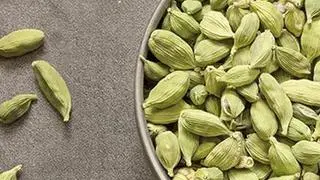Indian farmers’ refusal to grow proper refuge crops around Bt cotton fields and to limit the area under the transgenic crop are helping pests fast develop resistance to the transgenic technology, according to a study carried out in Telangana and Andhra Pradesh.
The proportion of American bollworm insects resistant to Bt toxin Cry1Ac has gone up 65 times and 29 times on Bt cotton fields in Telangana and Andhra Pradesh respectively, in 12 years since the introduction of transgenic crop in 2002, showed the study carried out jointly by entomologists from Prof. Jayashankar Telangana State Agricultural University (PJTSAU) in Hyderabad and their counterparts in the US.
The main authors of the study, which appeared in the journal Crop Protection recently, were TVK Singh of PJTSAU and his research student Vinod Kukanur. A co-author of the study was Keshav R Kranthi, former Director of the Central Institute of Cotton Research (CICR), who currently heads the technology information division of the Washington-based International Cotton Advisory Committee.
Need for refuge crops
In kharif 2017-18, cotton was grown over a total of 12.25 million hectares. Of this, 89 per cent of the area was covered with Bt cotton, which was an increase of 7 per cent over the previous season. Interestingly, Australia managed to keep the frequency of American bollworm resistant to Cry1Ac low because it has allowed only 30 per cent of its total cotton area to be under Bt and enforced strict compliance to grow refuge crops.
Growing refuge crops around Bt cotton reduces the chance of the pests developing resistance, which is a survival strategy for them. When crops that the insects can feed on are around, there is only a limited evolutionary pressure for the pests mount an attack on the Bt toxin.
Pink bollworm attack
Indian farmers grow two varieties of Bt cotton — Bollgard-I and Bollgard-II. As the names suggest, Bollgard-I has one Bt toxin ( Cry1Ac ) and Bollgard-II has two toxins — both Cry1Ac and Cry2Ab . Bt cotton is meant to control the three species of bollworms in India, American bollworm, pink bollworm and spotted bollworm.
While American bollworm has developed some resistance to Cry1Ac , there are no field reports yet about the pest becoming resistant to Cry2Ab . However, pink bollworm, which is lesser virulent than American bollworm but still causes widespread damage to the cotton crop, has become resistant to Bollgard-II.
It was the pink bollworm that destroyed vast tracts of cotton fields in Telangana and Maharashtra recently. “Going for an overkill by saturating Indian cotton area with Bt cotton is precipitating the crisis,” said Kranthi.
American bollworm
“The issue of American bollworm resistance to Bt cotton is very serious. Unfortunately, such issues gain prominence in India only after they would have taken a toll. The American bollworm is a monster that is difficult to manage, unlike the pink bollworm,” Kranthi told BusinessLine .
“Losses would be huge when the American bollworms also develop resistance. This pest can be devastating. Resistance management strategies are not taken seriously in India as proactive initiatives. Therefore resistance can be expected to strike sooner, said the former CICR Director.
The fact that American bollworm has become increasingly resistant to Bt cotton has been known for some time. The present study examines the issue in greater depth, said Imran Siddiqi, a geneticist at the Hyderabad-based Centre for Cellular and Molecular Biology.







Comments
Comments have to be in English, and in full sentences. They cannot be abusive or personal. Please abide by our community guidelines for posting your comments.
We have migrated to a new commenting platform. If you are already a registered user of TheHindu Businessline and logged in, you may continue to engage with our articles. If you do not have an account please register and login to post comments. Users can access their older comments by logging into their accounts on Vuukle.